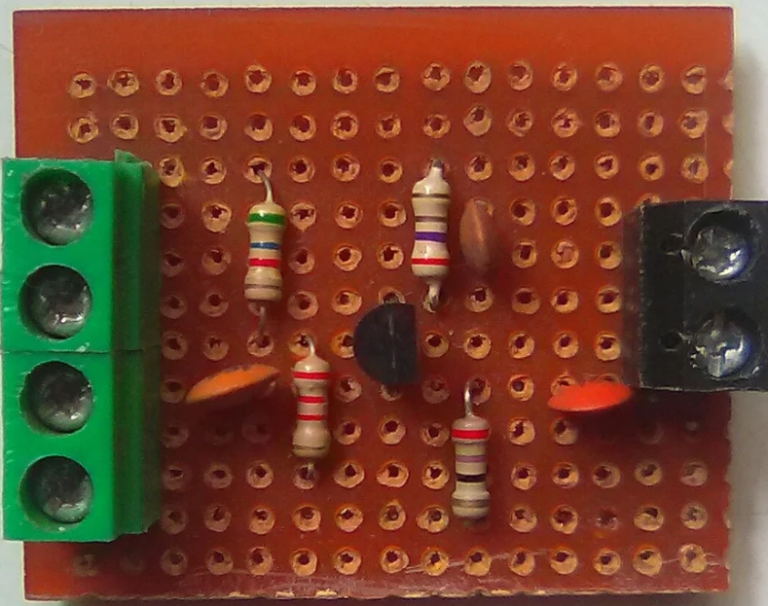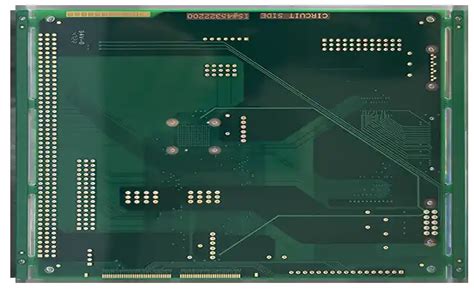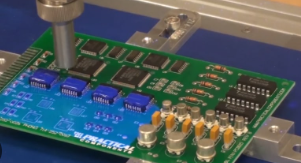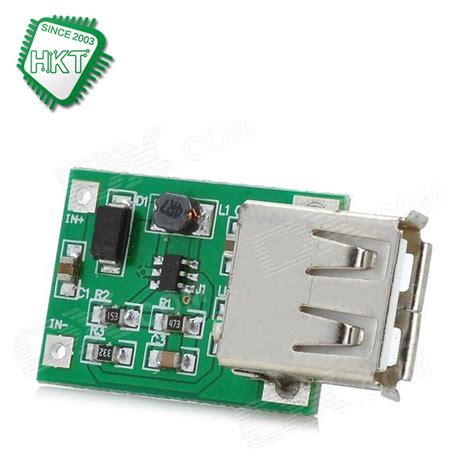Pcb high frequency board
Design Considerations For High-Frequency PCB Boards
Designing high-frequency printed circuit boards (PCBs) requires meticulous attention to detail and a deep understanding of the principles that govern high-frequency signals. As the frequency of operation increases, the behavior of the PCB and its components becomes more complex, necessitating a comprehensive approach to design.
One of the primary considerations in high-frequency PCB design is the choice of materials.
The dielectric constant (Dk) and loss tangent (Df) of the substrate material significantly impact signal integrity. Materials with low Dk and Df values are preferred as they minimize signal loss and ensure consistent signal propagation. Common materials used include PTFE (Teflon) and ceramic-filled laminates, which offer excellent electrical performance at high frequencies.
Another critical aspect is the layout of the PCB traces.
At high frequencies, traces act as transmission lines, and their impedance must be carefully controlled to prevent signal reflections and losses. This involves precise calculation of trace width, spacing, and the use of controlled impedance techniques. Microstrip and stripline configurations are commonly employed to achieve the desired impedance. Additionally, the use of ground planes is essential to provide a return path for high-frequency signals and to reduce electromagnetic interference (EMI).
The placement and routing of components also play a vital role in high-frequency PCB design.
Components should be placed to minimize the length of high-frequency signal paths and to reduce the potential for crosstalk between adjacent traces. It is advisable to keep high-frequency components away from noisy power and ground planes to prevent interference. Furthermore, the use of decoupling capacitors is crucial to filter out high-frequency noise and to stabilize the power supply.
Thermal management is another important consideration in high-frequency PCB design.
High-frequency circuits often generate significant heat, which can affect the performance and reliability of the PCB. Effective thermal management techniques, such as the use of thermal vias, heat sinks, and proper airflow, are necessary to dissipate heat and maintain optimal operating temperatures.
Signal integrity is a paramount concern in high-frequency PCB design.
Signal integrity issues, such as signal attenuation, distortion, and timing errors, can severely impact the performance of high-frequency circuits. To mitigate these issues, designers must carefully consider factors such as trace length, signal rise time, and the use of proper termination techniques. Simulation tools can be invaluable in predicting and addressing signal integrity problems before the PCB is fabricated.
Electromagnetic compatibility (EMC) is another critical factor in high-frequency PCB design.
High-frequency signals can generate electromagnetic radiation that can interfere with other electronic devices. To ensure EMC compliance, designers must implement shielding techniques, such as the use of ground planes, shielding enclosures, and proper trace routing. Additionally, adherence to EMC standards and guidelines is essential to avoid regulatory issues and to ensure the reliable operation of the PCB in its intended environment.
In conclusion, designing high-frequency PCBs involves a multifaceted approach that encompasses material selection, trace layout, component placement, thermal management, signal integrity, and electromagnetic compatibility. Each of these considerations is interrelated, and a holistic design strategy is necessary to achieve optimal performance. By meticulously addressing these factors, designers can create high-frequency PCBs that meet the stringent demands of modern electronic applications.

Material Selection For High-Frequency PCBs
When designing high-frequency printed circuit boards (PCBs), the selection of materials is a critical factor that significantly influences the performance, reliability, and overall functionality of the final product. High-frequency PCBs are typically used in applications such as telecommunications, radar systems, and advanced computing, where signal integrity and minimal loss are paramount. Therefore, understanding the properties and implications of various materials is essential for engineers and designers.
One of the primary considerations in material selection for high-frequency PCBs is the dielectric constant (Dk).
The dielectric constant measures a material’s ability to store electrical energy in an electric field. Materials with a low and stable dielectric constant are preferred for high-frequency applications because they minimize signal delay and ensure consistent signal propagation. Common materials with favorable dielectric properties include PTFE (Polytetrafluoroethylene), also known as Teflon, and ceramic-filled laminates. These materials offer low dielectric constants and are widely used in high-frequency PCB designs.
In addition to the dielectric constant, the dissipation factor (Df) is another crucial parameter.
The dissipation factor quantifies the energy loss as heat within the dielectric material when an electric field is applied. A low dissipation factor is desirable for high-frequency PCBs because it reduces signal attenuation and power loss, thereby enhancing the efficiency of the circuit. PTFE-based materials, for instance, exhibit low dissipation factors, making them suitable for high-frequency applications where minimal signal loss is essential.
Thermal management is another critical aspect to consider when selecting materials for high-frequency PCBs.
High-frequency circuits often generate significant amounts of heat, which can adversely affect performance and reliability if not properly managed. Materials with high thermal conductivity, such as ceramic-filled PTFE, help dissipate heat more effectively, ensuring that the PCB operates within safe temperature limits. Additionally, these materials maintain their electrical properties over a wide temperature range, which is crucial for maintaining signal integrity in varying environmental conditions.
Mechanical stability is also a key factor in material selection.
High-frequency PCBs are often subjected to mechanical stresses during manufacturing, assembly, and operation. Materials with high dimensional stability, such as ceramic-filled laminates, resist deformation and maintain their structural integrity under stress. This stability is vital for ensuring consistent electrical performance and preventing issues such as signal distortion or impedance mismatches.
Furthermore, the choice of materials can impact the manufacturability and cost of high-frequency PCBs.
While advanced materials like PTFE and ceramic-filled laminates offer superior electrical and thermal properties, they can be more challenging to process and may require specialized manufacturing techniques. These materials are also generally more expensive than standard FR-4 laminates. Therefore, designers must balance performance requirements with manufacturing capabilities and budget constraints when selecting materials for high-frequency PCBs.
In conclusion, the selection of materials for high-frequency PCBs involves a careful evaluation of several factors, including dielectric constant, dissipation factor, thermal management, mechanical stability, and manufacturability. By understanding the properties and trade-offs of different materials, engineers can make informed decisions that optimize the performance and reliability of high-frequency circuits. As technology continues to advance and the demand for high-frequency applications grows, the importance of selecting the right materials for high-frequency PCBs will only become more pronounced.
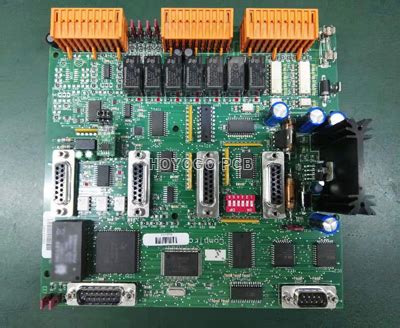
Signal Integrity Challenges In High-Frequency PCB Design
In the realm of high-frequency printed circuit board (PCB) design, signal integrity emerges as a paramount concern. As frequencies escalate, the behavior of electrical signals becomes increasingly complex, necessitating meticulous attention to various factors that can compromise signal integrity. One of the primary challenges in high-frequency PCB design is managing signal loss. At elevated frequencies, signal attenuation becomes more pronounced due to dielectric losses and conductor losses. Dielectric losses occur as the signal propagates through the PCB material, while conductor losses arise from the resistance of the copper traces. Both types of losses can degrade signal strength, leading to potential data errors and reduced performance.
Moreover, impedance control is critical in high-frequency PCB design.
Impedance mismatches can cause signal reflections, which in turn lead to signal degradation and timing issues. To mitigate this, designers must ensure that the impedance of the transmission lines is consistent with the source and load impedances. This often involves careful selection of PCB materials and precise control over trace dimensions and spacing. Additionally, the use of differential signaling can help maintain signal integrity by reducing susceptibility to electromagnetic interference (EMI) and crosstalk.
Crosstalk, another significant challenge, occurs when a signal in one trace induces an unwanted signal in an adjacent trace.
This phenomenon is exacerbated at high frequencies due to the increased coupling between traces. To minimize crosstalk, designers can employ techniques such as increasing the spacing between traces, using ground planes to provide shielding, and routing high-speed signals on different layers. Furthermore, the layout of the PCB plays a crucial role in mitigating crosstalk. For instance, routing high-frequency signals perpendicular to each other on adjacent layers can reduce the likelihood of crosstalk.
Electromagnetic interference (EMI) is also a major concern in high-frequency PCB design.
EMI can originate from both external sources and internal components, potentially disrupting the operation of the PCB. To combat EMI, designers can implement shielding techniques, such as using ground planes and metal enclosures. Additionally, proper grounding and decoupling strategies are essential to minimize EMI. For example, placing decoupling capacitors close to power pins can help filter out high-frequency noise.
Thermal management is another critical aspect of high-frequency PCB design.
As frequencies increase, so does the power dissipation, leading to potential overheating issues. Effective thermal management strategies, such as using thermal vias, heat sinks, and proper PCB materials, are necessary to ensure reliable operation. Moreover, thermal analysis during the design phase can help identify potential hotspots and allow for proactive measures to be taken.
In addition to these challenges, the choice of PCB materials is pivotal in high-frequency design.
Materials with low dielectric constant and low loss tangent are preferred to minimize signal loss and ensure signal integrity. Advanced materials, such as PTFE (polytetrafluoroethylene) and ceramic-filled laminates, are often used in high-frequency applications due to their superior electrical properties.
In conclusion, signal integrity in high-frequency PCB design is influenced by a multitude of factors, including signal loss, impedance control, crosstalk, EMI, thermal management, and material selection. Addressing these challenges requires a comprehensive understanding of high-frequency behavior and meticulous design practices. By employing appropriate techniques and materials, designers can ensure that high-frequency PCBs perform reliably and efficiently, meeting the stringent demands of modern electronic applications.
Advanced Manufacturing Techniques For High-Frequency PCBs
High-frequency printed circuit boards (PCBs) are integral to the performance of modern electronic devices, particularly in applications such as telecommunications, aerospace, and advanced computing. The manufacturing of these high-frequency PCBs requires advanced techniques to ensure optimal performance, reliability, and durability.
One of the primary considerations in the production of high-frequency PCBs is the selection of appropriate materials.
Unlike standard PCBs, high-frequency boards often utilize specialized substrates such as polytetrafluoroethylene (PTFE), ceramic-filled PTFE, or other low-loss materials. These substrates are chosen for their excellent dielectric properties, which minimize signal loss and ensure signal integrity at high frequencies. The choice of material directly impacts the board’s performance, making it a critical step in the manufacturing process.
In addition to material selection, precise control over the manufacturing environment is essential.
High-frequency PCBs are highly sensitive to variations in temperature and humidity, which can affect the dielectric constant and, consequently, the signal transmission. Therefore, manufacturers must maintain stringent environmental controls throughout the production process. This includes using cleanroom facilities to prevent contamination and employing advanced climate control systems to regulate temperature and humidity levels. Furthermore, the design and layout of high-frequency PCBs require meticulous attention to detail. Signal integrity is paramount, and any impedance mismatches or signal reflections can degrade performance. To address this, designers use advanced simulation tools to model the electrical behavior of the PCB and optimize the layout accordingly. Techniques such as controlled impedance routing, differential pair routing, and careful placement of vias are employed to ensure consistent signal transmission.
Moreover, the manufacturing process itself involves several sophisticated techniques.
One such technique is laser direct imaging (LDI), which offers high precision in defining the circuit patterns on the PCB. LDI uses a laser to directly expose the photoresist, eliminating the need for photomasks and allowing for finer feature sizes and tighter tolerances. This is particularly important for high-frequency PCBs, where even minor deviations can impact performance. Another critical aspect of manufacturing high-frequency PCBs is the plating process. Electroless nickel immersion gold (ENIG) plating is commonly used to provide a smooth, corrosion-resistant surface that ensures reliable soldering and excellent electrical performance. The ENIG process involves depositing a layer of nickel followed by a thin layer of gold, which protects the nickel from oxidation and provides a stable contact surface.
Additionally, advanced inspection and testing methods are employed to ensure the quality and reliability of high-frequency PCBs.
Automated optical inspection (AOI) and X-ray inspection are used to detect defects such as misalignments, voids, and other anomalies that could affect performance. Electrical testing, including time-domain reflectometry (TDR) and vector network analysis (VNA), is conducted to verify the impedance characteristics and signal integrity of the PCB. In conclusion, the manufacturing of high-frequency PCBs involves a combination of advanced materials, precise environmental controls, meticulous design practices, and sophisticated production techniques. Each step in the process is critical to achieving the high performance and reliability required for applications in telecommunications, aerospace, and advanced computing. As technology continues to evolve, the demand for high-frequency PCBs will only increase, driving further advancements in manufacturing techniques and materials.

